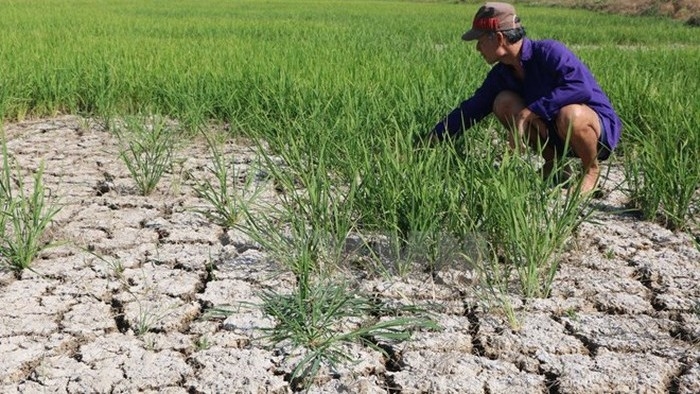
A drought-affected rice field in the southern province of Long An (Photo: VNA)
According to the National Centre for Hydro-Meteorological Forecasting, the rainfall levels in October in many areas across the country were lower than the average level for many years from 20% to 70%. In particular, the total rainfall of the central provinces from Thanh Hoa to Quang Binh was posted at 50 to 130 mm, which was 80-95% lower than the average level. Central provinces are facing drought even in the rainy season.
One of the reasons for this situation is the lack of rainfall due to the early cold air in 2018 combined with other phenomena including typhoons and easterly winds in the upper atmosphere. It is forecast that this year's rainy season will end earlier than the average time for many years.
The capacity of irrigation reservoirs in the North, Central Highlands and in Thanh Hoa and Nghe An provinces is relatively high, reaching over 80% of the designed storage capacity, while the storage capacity in other regions is approximately 20 to 40%. Some provinces reporting low reserves are Quang Tri (22%), Thua Thien - Hue (18%), Quang Ngai (20%), Binh Dinh (13%) and Khanh Hoa (28%).
According to the National Centre for Hydro-Meteorological Forecasting, El Niño phenomenon has been occurring since October, causing the risk of drought and saltwater intrusion in the southern part of Vietnam in the coming dry season.
With aims to limit damage caused by drought, the Ministry of Agriculture and Rural Development has issued Directive No. 8382 on strengthening the implementation of irrigation measures to prevent drought, water shortages and saline intrusion to serve agricultural production and daily life of the people.
The ministry also asked the People's Committee of provinces and cities to develop plans to prevent drought, water shortages and saline intrusion in addition to outlining the scenarios of water resources to implement timely and appropriate solutions in the dry season in the 2018 - 2019 period. Localities are also directed to closely monitor hydro-meteorological forecasts to operate reservoirs and develop proper water distribution plans.
The ministry advises localities to actively dredge the water intake and the canal system; building dams and reservoirs; and at the same time rearranging the agricultural production structure and crops to ease the impact of drought, water shortages, and saltwater intrusion.
Meanwhile, localities are told to increase the farming of cultivars capable of adapting to drought, water shortages and salinity intrusion in addition to implementing advanced irrigation solutions to save water./.
NDO
 Central bank mulls raising gold position limit for lenders
Central bank mulls raising gold position limit for lenders



